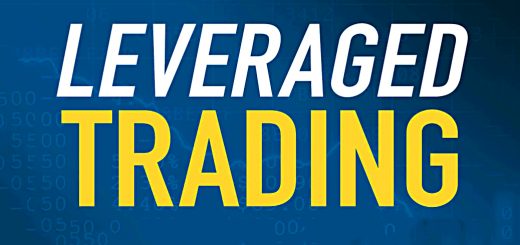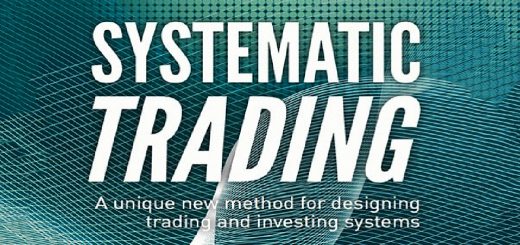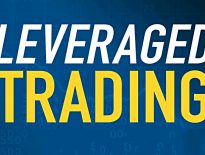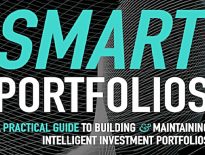Leveraged Trading 5 – New Rules

Today’s post is our fifth visit to a new book by Rob Carver, one of our favourite financial authors. The book is called Leveraged Trading.
New trading rules
In Chapter Eight, Rob looks at adding new trading rules to the system.
- As before, he wants them to be simple, objective, explicable and intuitive.
Complicated rules are likely to be over-fitted to past data.
Rob presents Sharpe ratios for six variations (speeds) of the MAC (moving average crossover) rule, plus two new rules:
- breakouts (again with six speeds), and
- carry (which has only one flavour.
He notes that even if the additional rules don’t provide higher returns than the ones we have, diversification means that the volatility will be reduced and the SR will increase.
Adding new rules is not as beneficial as adding new instruments:
- five instruments give an SR of 0,35 (compared with 0.24 for a single instrument)
- five rules only get us to 0.32
Ten instruments have an SR of 0.45, whereas 10 rules have an SR of 0.34.
On the other hand, adding rules doesn’t require any more capital.
So I would now add Rob’s preferred MAC of 16,64 to my own of 50,200.
- If we need a third we could add 32,128.
Rob’s breakout uses the range of prices over a given period and scales today’s price within that range.
- Rob uses values from -0.5 to +0.5, but I prefer a range of 0% to 100%.
Rob uses anything above zero as a buy signal and anything below zero as a sell signal.
- I would be more likely to ignore the central part of the range (eg, from 20% to 80%, or even from 10% to 90%).
Rob says that a range of days for the look back of between 10 and 320 works best.
- Doubling the period (10, 20, 40 etc.) makes the rules sufficiently different from each other.
On that basis, I am most drawn to 40 and 160 days, with 80 as a third choice (if I need three breakout rules).
Rob’s third type of trading rule is carry.
- MAC and break out rules work best with trends, but carry workd best when prices are stable.
In fact, carry is defined as the expected return when prices are stable.
- The impact of any funding spread on long versus short positions needs to be removed since this will be accounted for when trading costs are assessed.
The simplest way to think of carry is the yield on a bond or the dividend yield on a stock.
- With FX rates the carry depends on the borrowing and deposit rates in the two currencies.
Rob says that positive carry is a but signal and negative carry is a sell signal.
- But with many potential positive carries, you are like to choose (a selection of) the highest and lowest.
Using multiple rules
Now we have to decide how to interpret the messages fro multiple rules.
Here are a few ideas that Rob rules out:
- Trade each rule separately
- This works, but it needs a lot of capital
- “Weird interactions” between rules
- Like complicated rules, these tend to be over-fitted to past data
- Unanimous voting
- You’ll be waiting forever to open a position
- Majority voting
- This also works, but Rob prefers to underweight similar rules (like MAC and breakout)
So Rob likes a weighted average rule.
- He maps every rule onto a +10 (long) to -10 (short) scale.
Once again, I’d be tempted to use a 0% to 100% scale for simplicity.
- And I might weight each more closely to even (as I’m not convinced that every rule produces the same excess returns.
With multiple rules, Rob will increase his risk target – from 12% for one rule up to 16% for 10 or more rules.
- With multiple instruments, you can multiply the two effects.
But Rob would cap risk targets at 30%.
- You can hit this level with, say, 7 rules and 10 instruments (or in fact, with 4 rules and 8 instruments).
As before, when all instruments come from the same asset class, risk level should be lower.
Closing rules
Rob weights his closing rules according to the number of expected trader per year (per rule).
- The average fraction of volatility for the normal range of trades works out at 50%.
Continuous trading
Rob’s first – and to me, slightly surprising – step is to do away with the stop loss.
Stop losses have two jobs:
- They control risk by limiting your maximum loss.
- The RSS used a maximum loss of 6% (annualised risk target * stop loss fraction)
- They get you out of losing trades “early”.
In the advanced system, Rob wants to use time-based risk control rather than trade-based risk control.
- The annualised risk target controls how much we expect to make (or lose) on any given day, which in turn determines how large our positions should be.
To get out of trades, we can simply reverse our opening rule.
- For the majority of rules we’ve looked at so far – which are momentum-based – reversing the rule is directly analogous to using a stop-loss.
Of course, switching to a reverse of the opening rule means that not only will we close our original position, we’ll also open a new position in the opposite direction.
- Rob calls this continuous trading since there is always a position in place.
- Others call it stop-and-reverse trading.
With multiple trading rules, you simply look at the direction of the weighted average signal.
Rob says that dropping the stop loss improves the SR of the RSS from 0.24 to 0.27.
- He also advises keeping the stop loss if more than 50% of your opening rule weighting is from non- trend-following rules (like carry).
Rob’s own automated trading system is 60/40 momentum/carry – so he doesn’t use a stop loss.
Conclusions
That’s it for today – we’ve covered another one-sixth of the book and have one more article to go in this series (plus a summary).
- The next post will cover position adjustment.
Until next time.


















